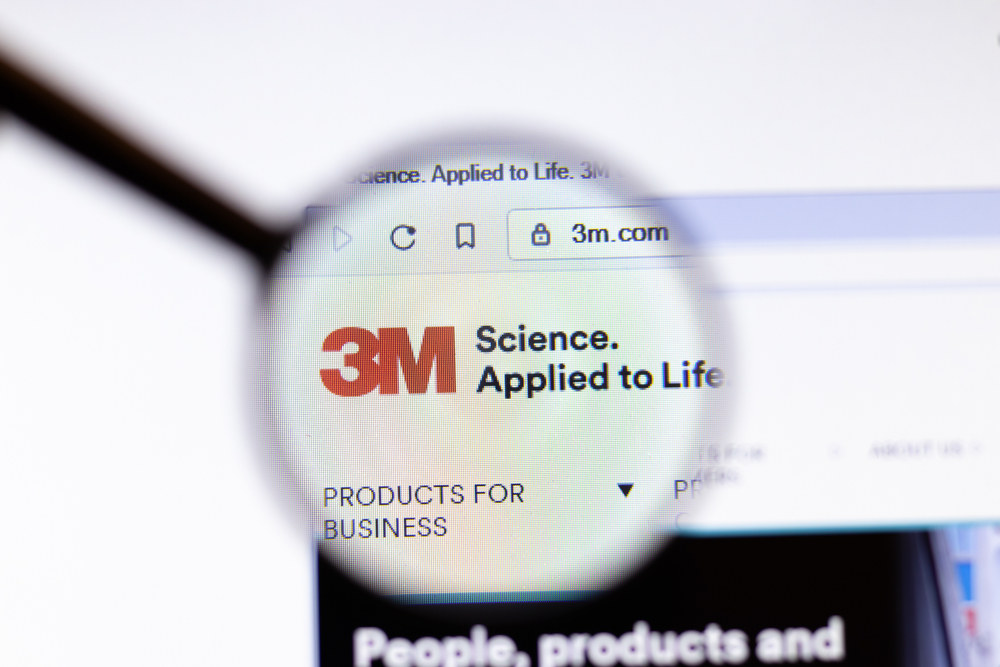Thousands of veterans suing over 3M earplugs are closer to resolution
The recent denial of 3M Company’s attempt to have the courts dismiss litigation from 150,000 veterans suffering hearing loss or tinnitus from faulty earplugs means one of the country’s largest multidistrict cases is moving closer to settlement or trial.


“It doesn’t mean the plaintiffs win, but it means they can pursue their state tort claims,” said Michael Green, a torts professor and scholar at Wake Forest University School of Law in North Carolina.
This is just the latest step in a lengthy dispute between 3M and the government, as well as individuals, stemming from a 2016 whistleblower suit brought by a 3M competitor. It alleged that earplugs manufactured by Aearo Technologies, which 3M acquired in 2008, were faulty and led to hearing impairments for American troops serving in Afghanistan and Iraq between 2003 and 2015.
RELATED: Kodak loan investigation by SEC is all about timing
RELATED: GNC lawsuit hinges on mask order, bankruptcy

In 2018, 3M agreed to pay $9.1 million to the government and whistleblower, Moldex, a 3M competitor, to resolve the allegations that it knowingly sold the defective earplugs to the military.
Following that, thousands of veterans sued the Minnesota manufacturing company resulting in multidistrict litigation that now involves more than 150,000 plaintiffs from across the country.
Questioning design specifics
3M applied for a summary judgment asking U.S. District Court Judge M. Casey Rodgers to dismiss these lawsuits based on the government contractors defense.
This defense is used so contractors do not have to worry about liability if they create something to the government’s specifications, Green explained. It’s so the military can get equipment exactly the way it wants it.
But Rodgers, who is in the Northern District of Florida, recently ruled 3M did not meet the criteria for the defense because Aearo designed the earplugs. The Army didn’t issue a request for design proposals and there was no competitive bid.
3M has a statement on its website about the lawsuits.
“3M has supplied Combat Arms Earplugs to the U.S. military for more than a decade. This product represents a significant innovation in hearing protection — it was the first earplug product to offer protection from loud sounds — like gunfire — while maintaining the ability to hear softer sounds — like speech,” it reads in part.
“Currently, the Combat Arms Earplugs Version 2 (CAEv2) is the subject of litigation and recent media reporting. The company worked in close coordination with the U.S. military on the CAEv2 product, and its design reflected the direction and feedback of individuals acting on the military’s behalf. We deny this product was defectively designed and caused injuries, and we will vigorously defend ourselves against such allegations.”
More hoops and settlement predicted
With the end of this case and the chance to appeal a long way off, Green surmised 3M could ask the trial judge for an interlocutory appeal to the summary judgment while the rest of the case continues to process.
Regardless, he expects the case will ultimately settle before any trials begin.

“American law has a ton of procedural rules, which can enable parties to litigate without ever having to litigate in front of the jury,” said Timothy Kaye, a torts professor and expert at Stetson University College of Law in Florida.
“I tease my American students that theoretically everyone is entitled to jury trials but only if you jump through a ton of procedural hoops,” added Kaye, who is from the United Kingdom.
The thousands of veteran plaintiffs may want their day in court to tell how they trusted the earplugs would protect their hearing and what their life is like now with auditory issues. But the hoops can last years before a trial, making a settlement the faster remedy.
Putting a price on hearing?
That’s one reason multi district and class action suits are often settled, Kaye said. Another reason: bad publicity.
“That’s often why they want to settle. They’re trying to avoid having their dirty laundry aired in public,” he said. “You’ve got people serving their country, who through no fault of their own, are suffering significant hearing impairment.”
Most likely, instead of a jury deciding on the financial payout 3M will have to make, it will become a back and forth between the two sides.
“How do you put a price on (the damages) if there’s no jury?” Kaye said. “That frightens both the plaintiffs and the defense. Are they not going to get enough or are they going to pay too much? It comes down to how much can you get away with. It’s really a game of chicken.”
Determining the value of the impact on an individual’s life because of alleged corporate negligence was memorably brought to life in the 2000 film Erin Brockovich.
Actress Julia Roberts portrayed the legal clerk turning down a settlement offer from attorneys representing Pacific Gas and Electric Co. of California, which had contaminated a water source and caused a myriad of health issues in a community near a power plant.
“Before you come back here with another lame ass offer, I want you to think real hard about what your spine is worth, Mr. Walker. Or what you might expect someone to pay for your uterus, Ms. Sanchez,” said the Brockovich character in the movie. “Then you take out your calculator and you multiply that number by a hundred. Anything less than that is a waste of our time.”
Degrees of damage
There won’t be a standard amount for each plaintiff, both attorneys said. Some kind of matrix will dictate who gets what amount of money based on their level of hearing issues.
Green predicted the number of veterans who receive a payout will be a “fraction” of the 150,000 or more plaintiffs.
“Whenever you have cases like this the question is always what are the alternative competing causes that may have produced the outcome,” he said.
Green pointed to lawsuits claiming cancer resulted from exposure to a certain product or chemical. It’s hard to know exactly what caused the cancer, which can occur for numerous reasons and often for no definitive reason at all.
In the 3M suits, the company’s defense attorneys will point to other factors that can damage hearing such as loud music or rock concerts.
“It seems implausible that all 150,000 are going to have diminished hearing that is due to something else,” Green said. “But they aren’t going to find 150,000 who have diminished hearing. These multidistrict lawsuits find a product that’s problematic and sign everyone up in the world who might possibly have a claim. Valid claims are like a vacuum cleaner. They suck in weak claims.”
Visit the full Legal Examiner Workplace Injury Help Center.
Contact Katherine Snow Smith at Katherine@legalexaminer.com. Follow her on Twitter at @snowsmith.














